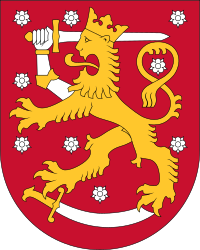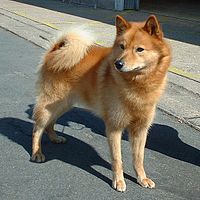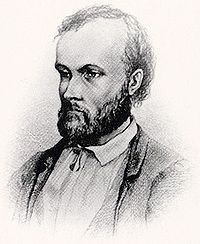
The Kalevala is a 19th-century compilation of epic poetry, compiled by Elias Lönnrot from Karelian and Finnish oral folklore and mythology, telling an epic story about the Creation of the Earth, describing the controversies and retaliatory voyages between the peoples of the land of Kalevala called Väinölä and the land of Pohjola and their various protagonists and antagonists, as well as the construction and robbery of the epic mythical wealth-making machine Sampo.
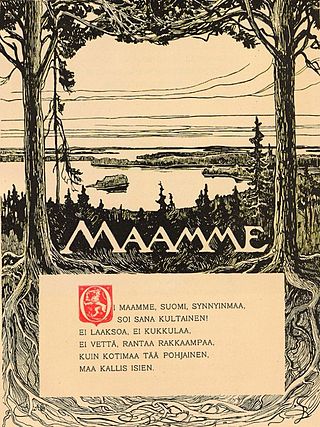
"Maamme" is the de facto national anthem of Finland. The music was composed by the German immigrant Fredrik Pacius, with original Swedish lyrics by Johan Ludvig Runeberg. It was first performed with the current melody and lyrics on 13 May 1848. Originally, it was written for the 500th anniversary of Porvoo, and for that occasion it was Runeberg himself who wrote the music.
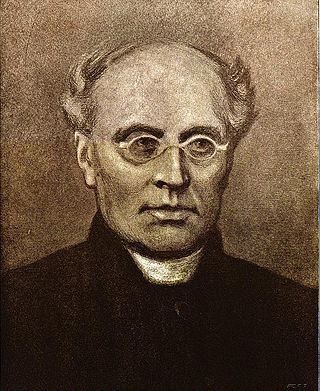
Johan Ludvig Runeberg was a Finnish priest, lyric and epic poet. He wrote exclusively in Swedish. He is considered a national poet of Finland. He is the author of the lyrics to Vårt land which became an unofficial Finnish national anthem. Runeberg was also involved in the modernization of the Finnish Lutheran hymnal and produced many texts for the new edition.
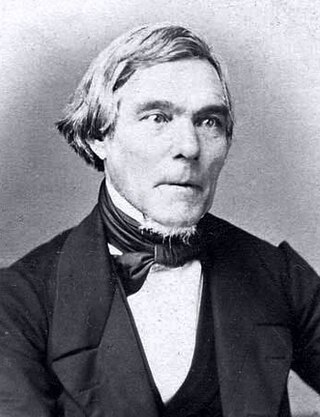
Elias Lönnrot was a Finnish polymath, physician, philosopher, poet, musician, linguist, journalist, philologist and collector of traditional Finnish oral poetry. He is best known for synthesizing the Finnish national epic, Kalevala (1835, enlarged 1849) from short ballads and lyric poems he gathered from Finnish oral tradition during several field expeditions in Finland, Russian Karelia, the Kola Peninsula and Baltic countries.
The music of Finland can be roughly divided into folk music, classical and contemporary art music, and contemporary popular music.
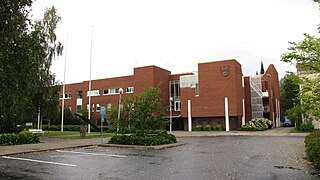
Kauhajoki is a town and municipality of Finland. It is located in the province of Western Finland and is part of the Southern Ostrobothnia region, 59 kilometres (37 mi) southwest of the city of Seinäjoki. The population of Kauhajoki is 12,618 and the municipality covers an area of 1,298.98 km2 (501.54 sq mi) of which 16.46 km2 (6.36 sq mi) is inland water. The population density is 9.71/km2 (25.1/sq mi). The town is unilingually Finnish.

Finland declared its full independence on 6 December 1917. The formal Declaration of Independence was only part of the long process leading to the independence of Finland.
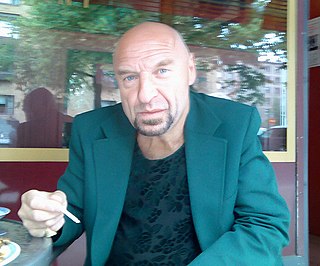
Henry Olavi "Remu" Aaltonen is a Finnish drummer and singer. He is the lead musician of the band Hurriganes, but has also pursued a solo singing career.

Mauno Jokipii was a Finnish professor at the University of Jyväskylä in history specializing in World War II. He was a thorough investigator and a prolific author. Among his works were studies of the local history of Jyväskylä and the university and historical province of Satakunta.
The Finnish Kale are a group of the Romani people who live primarily in Finland and Sweden. Their main languages are Finnish, Swedish and Finnish Romani. Kalo/Kale is the collective name for traveler people in Finland, England and Spain.
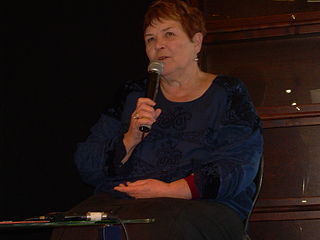
Kaisa Korhonen is a Finnish singer, actor, theatre director and writer. She was a central figure in the Finnish leftist music scene of the 60s and 70s, appearing both as a solo artist, and with KOM-teatteri. After her singing career, Korhonen has become an accomplished director and teacher of theatre directing.
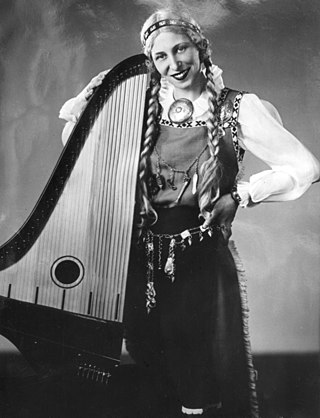
Ulla Kyllikki Katajavuori-Koskimies was a Finnish musician who played the traditional Finnish kantele, performing from the 1930s to the 1990s. One of her recordings is the Karelian folk song Konevitsan kirkonkellot.
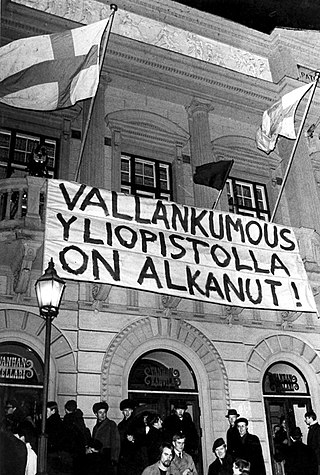
The takeover of Vanha was an uprising by a number of students on November 25, 1968, at the Old Student House of the University of Helsinki in Finland. It occurred on the night of the 100th birthday of the university's student union. The rioters took over Vanha during the celebrations, demanding changes to the university's administration and the curriculum.

The Pohjola Insurance building is the former headquarters of the Pohjola Insurance Company at Aleksanterinkatu 44 and Mikonkatu 3 in central Helsinki. Primarily designed by Gesellius, Lindgren & Saarinen and constructed in 1899–1901, it is a prominent example of Finnish national romantic architecture. It was acquired in 1972 by Kansallis-Osake-Pankki, now succeeded by Nordea.

Pekka Heikki Tapani Gronow is a Finnish ethnomusicologist and historian of the recording industry. He studied at Wesleyan University with David P. McAllester and Robert E. Brown and at the University of Helsinki and received his PhD from the University of Tampere. He was the head of the record library at Yleisradio 1989–2006 and an archiving specialist 2007–2008. Gronow became known in the 1960s for his radio programs on jazz and blues. In 1966 he founded with M. A. Numminen Eteenpäin, a record company which issued Numminen's works and other underground artists.

In Finland, the far right was strongest in 1920–1940 when the Academic Karelia Society, Lapua Movement, Patriotic People's Movement (IKL) and Vientirauha operated in the country and had hundreds of thousands of members. In addition to these dominant far-right and fascist organizations, smaller Nazi parties operated as well.
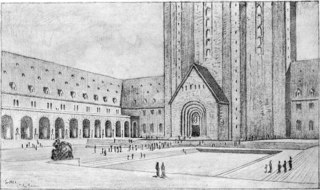
The Kalevala House was a planned huge building designed by Eliel Saarinen for the Kalevala Society in Helsinki, Finland in 1921, which was never built. It was to be built at the top of Munkkiniemi, close to the current Hotel Kalastajatorppa. The Kalevala House was to become not only the premises of the Kalevala Society, but also a center of Finnish culture: it would have included a Finnish cultural research institute, exhibition spaces, artists' workspaces and "research chambers". In addition, Finnish great men and Fennomen would have been buried in the crypt at the foot of the 80-meter-high main tower.
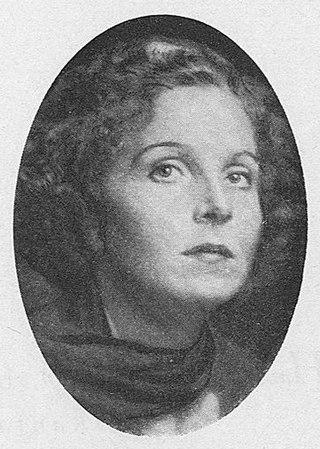
Ella Eronen was a Finnish actor and poetic reciter, and one of the country's leading actresses of the 20th century, especially of the 1930s through to 1950s. She was variously known as Diiva, La Ella and Ella Suuri. The noted Finnish theatre and film critic Jukka Kajava called her "possibly Finland's most legendary theatre actor".
Finnish alcohol culture refers to the drinking culture regarding beverages containing ethyl alcohol in Finland and to the manners and habits connected to the drinking culture.


